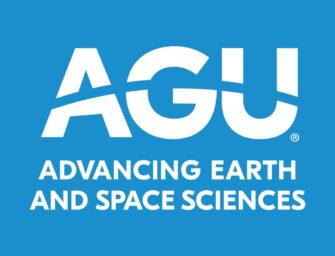The U.S. National Space Weather Strategy and You
By David Sibeck (NASA/GSFC), President, Space Physics and Aeronomy Section
While the effects of most space-weather events are not as immediately recognizable as floods, hurricanes, or tsunamis, they can be just as detrimental. Extreme space-weather events could cause prolonged losses of electrical power that would be incredibly destructive to the lives and livelihoods of millions of people. If such a disaster were to strike, the impacts could be widespread, cascading, and difficult to remediate. In addition, the impact of more frequent, but less severe, space-weather phenomena on many of our modern technological systems, including radio communication, GPS navigation, pipelines, and spacecraft, can have a significant economic impact.
Strengthening national security and resilience in the face of natural and man-made threats has been identified as a priority for the U.S. (Presidential Policy Directive 8), and in support of this goal, the Secretary of Homeland Security has led an effort to assess preparedness for the threats that pose the greatest risk to our nation. One of the threats identified in the resulting Strategic National Risk Assessment (December 2011) was “a burst of electromagnetic radiation and energetic particles causing utility outages and damage to infrastructure.” In November 2014, the National Science and Technology Council chartered the Space Weather Operations, Research and Mitigation (SWORM) Task Force to develop a National Space Weather Strategy that articulates the high-level strategic goals for enhancing national preparedness to such space-weather events.
The SWORM has just released its draft strategy for comments. This strategy defines six goals to prepare the U.S. for near- and long-term space weather impacts. While all parts of the strategy will be of interest, those parts that concern the accuracy and timeliness of space-weather forecasts, the observations needed to make forecasts, the science understanding required to make meaningful forecasts, and the need for international cooperation and coordination will likely be of greatest interest to AGU scientists.
As documented by many articles in the AGU’s Space Weather journal, the science that helps to us to understand and predict space weather is advancing rapidly. With real-time and near real-time input from both space-based (e.g. Solar Dynamics Observatory, Van Allen Probes, GOES, and POES) and ground-based observations (e.g. magnetometer, riometer, radar, GNSS receivers), numerical simulations can predict the outward motion of coronal mass ejections and corotating interaction regions through interplanetary space, as well as the space-weather disturbances they cause in the Earth’s magnetosphere and ionosphere. Nevertheless, we still have difficulty predicting the onset time, magnitude, and consequences of these disturbances. This is partly due to sparse observational coverage, as documented by the Office of the Federal Coordinator for Meteorological Services and Supporting Research’s 2013 report on Space Weather Observing Systems: Current Capabilities and Requirements for the Next Decade. However, it is also due to our imperfect understanding of the physical processes that link the Sun to the Earth.
It is incumbent upon us, as researchers, to ensure that policy and decision makers have the information they need to construct an effective strategy for mitigating space-weather effects. An effective strategy will help guide funding agencies in determining the priorities assigned to new research projects and infrastructure investments. It will also help researchers focus and justify their proposals. Given the critical role the National Space Weather Strategy is going to play in the U.S., as well as the impact it will have on our international collaborations, we, as the scientific community, must make our voices heard. That’s why I strongly encourage you all to review the strategy’s recommendations and consider participating in the public comment period, which closes 29 May 2015.
AGU’s mission is to “promote discovery in Earth and space science for the benefit of humanity,” and in this task we have a unique ability to help inform society about our science and shape policy that will benefit our society for years to come.
*Read more about the National Space Weather Strategy in Eos.




There are no comments
Add yours